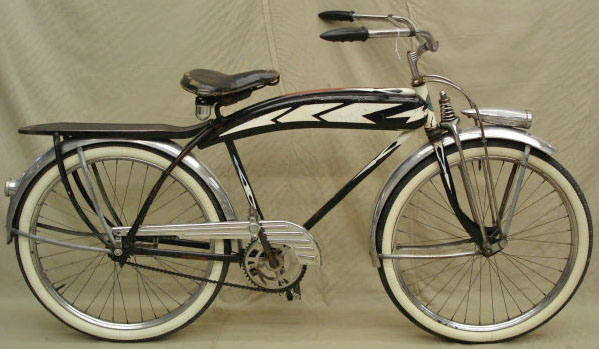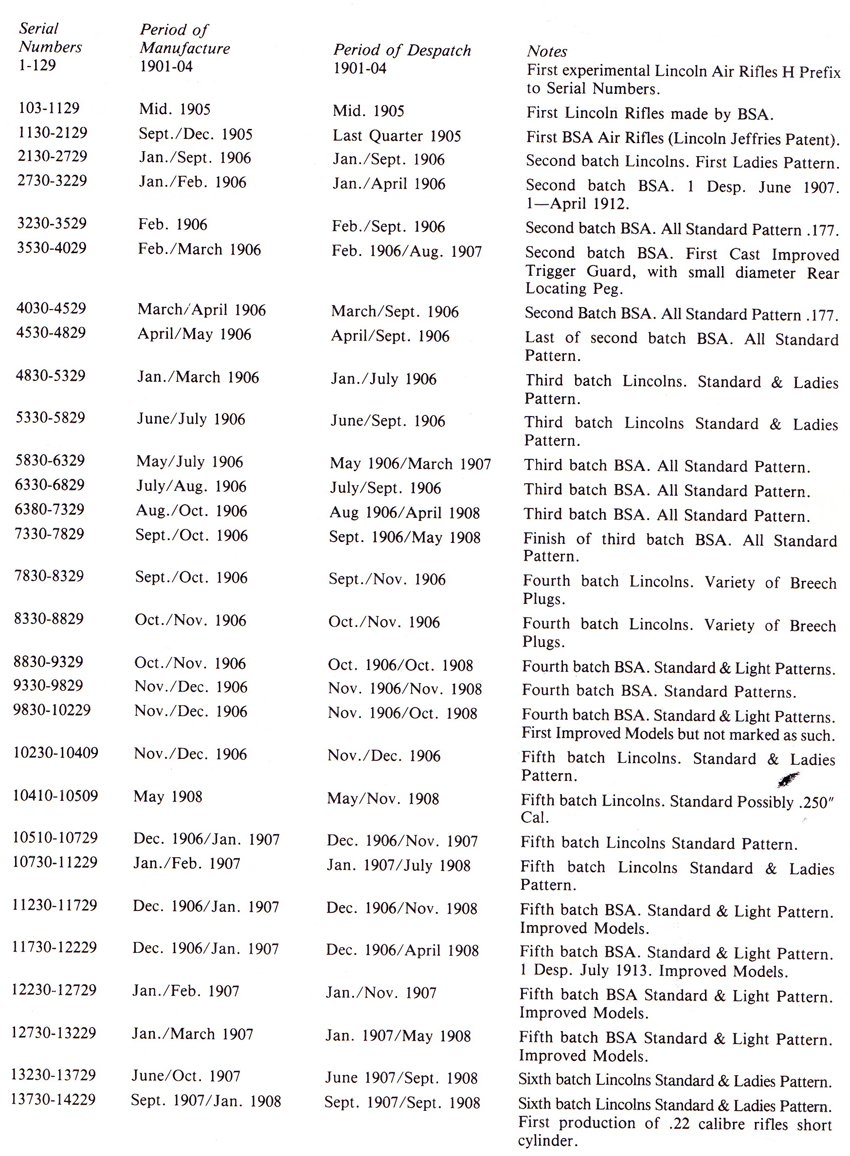Elgin Bicycle Serial Number Chart
FRAME NUMBER BICYCLE DATING GUIDE. HOW OLD IS MY BICYCLE? ‘How old is my bicycle?’ is a question I get asked a lot, nearly as much as: ‘I have a bicycle that looks like one of yours; if I send you pictures please can you identify it for me?’.
This is a canonical question that will hopefully encompass all of the questions we get asking us to determine what year a bicycle was manufactured (how old is my bike, how old is my frame, etc.). Each 'answer' should address a different way to determine the manufacturing year of a bicycle. To some extent, these will also help you narrow down the model as well as it will tell you what distinguishing features to look at.
The span of answers would include things such as:
Skiptooth cranks
Cartridge bottom brackets (BB30/90 etc)
Elliptical chainring
Quick releases versus contemporary through-axles
How the steerer attaches to the fork (quill vs. threadless)
Braking system (especially with mountain bikes: v-brake, direct pull, etc.)
Shifting ramps and pins on cassettes/sprockets and chainrings (versus flat sprockets)
Frame material (e.g., shift from tubular steel to use of CF and hydroformed aluminium)
Frame tubing type (e.g. Reynolds 531 tubing introduced around 1934, still used today; Reynolds 501 tubing introduced around 1983). So a frame with an original 501 decal can't be from the 70', 531 decal doesn't help as much because of the range of years produced. Also, see Decals.
*Decals: style/design, amount, placement, color, etc. can help not only determine models, but also year of manufacture. Many changed decal design for the same model bike often yearly, with special/limited editions even more specific. This applies only if decals are original or have been replaced with the identical design. Tubing decals (Reynolds, Columbus, etc.) also changed designs for same tubing made in different years, although the changes aren't made as often, and manufacturers didn't always put tubing Brand decals on every model. Earlier bikes tended to have less fancy, less colorful, less quantity of decals.
Headbadges: most early bikes had actual 'badges', often quite detailed and fancy, made of metal, then plastic, and finally just using decals on the headtube. Most bikes lost their metal badges in the 60's and early 70's, although some brands still have actual badges to this day, but in general a real badge indicates an earlier model bike.
Dropout style (including the later inclusion of lawyers lips)
Presence or absence of CPSC reflectors (USA only)
Manufacturing method (shift from lugs to TIG welding, for example)
Number of gears (shift from 2x5 ten-speed to 3x8, 2x9, 1x11, etc.)
Inspection of lug design: pantographs, cut-out, stampings, custom brazing/filing, chrome, fork crow n sweep, etc.
Frame/Fork Braze-ons. Race bikes tended have less braze-ons the earlier the year of manufacture. Most 60's racers and earlier had few or none with cable guides/stops, shifters, bidons, etc. being clamp-on. By the 80's if it was clamp-on, it was a sign of very cheap models and most frames had braze-ons for all cables, with multiple bottle and accessory bosses depending on style and use.
and so forth. Please edit this question if you have an answer that isn't in the index above.

A couple of caveats:
A previous owner could have replaced or upgraded components on a bicycle, so this guide only applies to original equipment
There is a delay between the introduction of a technology (such as indexed shifting) and when manufacturers start selling products that use it. Low-end manufacturers may continue using technology that is severely outdated (such as one-piece cranks, freewheels, or quill stems) because it is cheaper to do so.
A number of bikes are built in a Retro style, but with modern components. Dutch bikes, trendy coffee cruisers, and beach cruisers may be modern but appear to be 1950s styling. These tend to have modern rims and brakes as a giveaway.
Note that bicycles.stackexchange does not do valuations of bicycles. How much your bicycle is worth depends on the location of the buyer and seller, how much the buyer wants the bike, etc. etc. etc.
8 Answers
Serial Numbers
Bicycles (except children's bicycles) are almost always required to have a frame or serial number. Some manufacturers use a date-code as part of the serial number.
For example, a Brompton uses YYMMXXX as their serial code, so a Brompton with a serial number of 1306123456 was manufactured in 2013.06 or June 2013
Surly is another manufacturer who uses date codes, this time in their stamped frame numbers.
Manufacturers who don't use date codes
However, many bicycle manufacturers don't use date codes and so you can't easily decode their serial numbers. Some of these manufacturers will provide their own serial number lookups on their websites. Some of the other ones have been reverse-engineered by their rider communities. The best way to find out is to google 'manufacturername bicycle serial number date of manufacturer.'
See also the Mongoose answer is below
.
Literature (old catalogues, fan websites, etc.)
I managed to date my old Raleigh by finding scans of old catalogues online. That model was only sold in one particular year, but more often you'd get it to within a few years this way. There are many old cycling documents at Veteran-Cycle Club Online Library, including plenty that can be accessed for free. Searching for a brand and plausible year with 'catalogue' can often turn up sites dedicated to scans of that brand's literature; you may need to check more than one such site for good coverage.
This will only really work for a major brand that has a bit of a following, as it relies on someone uploading the catalogues. You also need a rough idea (e.g. from the components) to know which catalogues to look in.
Bikepedia is also useful, but mainly for confirming when you think you know a year, and only goes back to 1993.
This would also include fan websites, such as for:
- Mongoose - uses design features and serial numbers to date

Indexed and Electronic Shifting
Shimano introduced Shimano Indexed Shifting (SIS) in 1984. If a bicycle has indexed shifters, then it is model year 1985 or later -- assuming that the shifters and derailleurs haven't been replaced.
The first Shimano Di2 electronic shifters were introduced on a production bicycle by Giant in 2009.
Ask the Seller/Owner
A simple thing if you're receiving a bike is to ask the person selling it. Take their info with a grain of salt though - some sellers may lie to increase the perceived value of a bike.

However if someone gives you a bike, they might say 'I remember my dad riding this to work in the 80s while I was at school'
So this information may be authoritative, or it may be an indicator to be combined with other factors.
Style of Shifter (friction shifter, brifter, grip shifter)
Downtube or handlebar mounted friction shifters were common on bicycles until the early 1980s when indexed shifting was introduced by Shimano in 1984 (see Indexed Shifting).
Mountain bike trigger shifters were introduced by ... in ...
The first Grip Shifters were introduced by SRAM in 1989 for mountain bikes.
Brifters (combination brakes and shifters on road bikes) were introduced in 1990 with the Shimano Total Integration (STI) system.
Freewheel or Cassette (Freehub)
If your bicycle uses a cassette freehub for the rear sprockets, then it was likely made in the late 1980s or later. Shimano came out with the first commercial freehub in 1978 in the Dura-Ace series, but it took about a decade for it to make significant inroads.
Like many other technologies, cheaper bicycles (and notably, many e-bikes) have continued to use freewheels even today so only the presence of a freehub/cassette can be used as a positive indication of date:
- Freehub-cassette present as original equipment: the bike was likely made in the late 1980s or later
- Freewheel present as original equipment: you can't determine anything about its age just from this
Cottered Cranks
The use of cottered cranks was popular on bikes until the mid to late 1970s until they were replaced by square taper and splined bottom bracket designs.
Raleigh, for example, introduced square tapers on some models in 1973 and phased cotters out on all their models around 1978. Like many things, the shift to square tapered and splined brackets took some time so there were still some mainstream bike companies still using them in the early 1980s. However, a cottered crank is generally a good sign your bike is pre-1980.
In some factories in China and India that are still working off old blueprints, cottered spindles may still be in use in the manufacture of new bikes.
Mongoose specific
if you have mongoose this may be if some help..
Older Mongoose bikes made through the 1980’s had pretty easy serial numbers. Generally the year and month of build was stamped as the first part of the serial number. For example my 1986 Mongoose Expert has a serial number M6EG0652. The first number (6) relates to the year – 1986. The next letter relates to the month (E) is May based on the convention January (A), February (B), March (C), April (D), May (E), June (F), July (G), August (H), September (I), October (J), November (K), December (L). It is assumed that the G0652 is the production number. There were a few variations on this type of serial number, but usually they were pretty easy to work out.
There are much more difficulties when looking at Mongoose serial numbers through the 1990’s and 2000’s. I spent quite a bit of time looking into these numbers on a few of my bikes as well as checking against other Mongoose BMX owners to see if my serial number crack was right. It seems to hold up and here it is.
Mongoose serial numbers are usually found stamped on the bottom of the bottom bracket. This is not always the case and there will be some bikes that do not fit into this formula.
Mid-school Mongoose BMX bikes built through most of the 90’s have a serial number that begins with 4 letters. The 3rd letter corresponds to the year of manufacture.
The 4th letter indicates the Month
A few serial number examples are:
HFGB00000 – 4 letters, GB are the dates. G is the year (1997), B is the month (Feb)
HFBH00000 – 4 letters, BH are the dates. B is the year (1992), H is the month (Aug)
New-school Mongoose BMX bikes built through most of the 2000’s have a serial number that begins with 5 letters. The 4th letter corresponds to the year of manufacture and follows on from the mid-school serial numbers.
A few serial number examples are:
HAMME00000 – 5 letters, ME are the dates. M is the year (2003), E is the month (May)
SAJPJ00706 – 5 letters, PJ are the dates. P is the year (2006), J is the month (Oct)
Please note: The Mongoose serial number will give you the build date of your BMX. Frames were normally manufactured the year before being sold in bike shops. So a build date on a frame of 2003 usually means the bike was sold in stores in 2004. This is the case with the 2003 Mongoose Brawler 24 below. The Serial has a build date of 2003, the 2004/004 on the stickers indicate this was a 2004 model.





